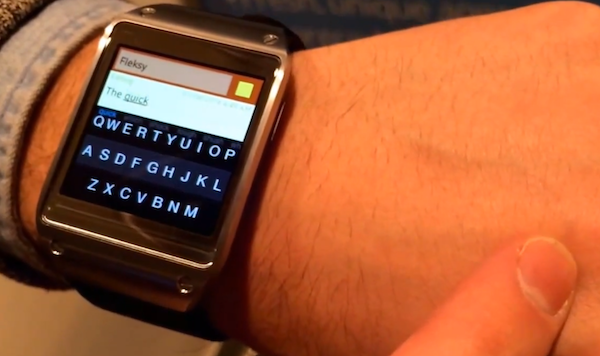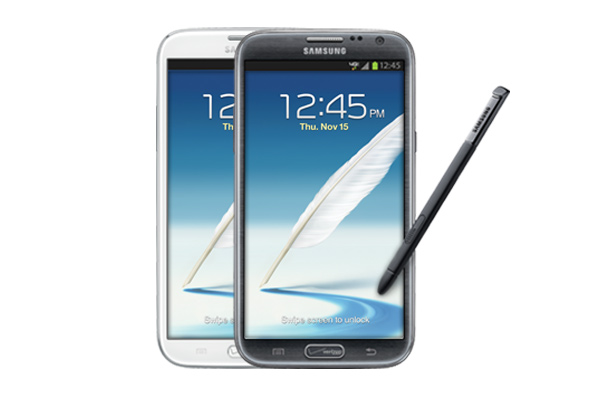
Watches are a touchy subject. If you’re a young person, you’ve probably never owned one because you’ve relied on your phone to tell you the time since you learned the letters of the alphabet. If you’re older, you probably owned a watch or two at some point, but then you eventually got a phone and failed to see the need to own a device that required manual calibration every few months. As for me, I got my first phone right as I got my first car. Before then, I had several time pieces. Nothing fancy, but enough so that I could coordinate my watch with my outfits.
I bring all this up to give you a background on how I see this product category. As you can guess, the reason I stopped wearing a watch is because it no longer made sense to me. Here’s a device, the mobile phone, that I carry with me everywhere, it always has the correct time because it syncs with the nearest cell tower, and it even has an alarm function, making the bedside clock obsolete as well.
When Samsung announced the Galaxy Gear, I admittedly had zero interest in it. Absolutely none. During my short time with the Galaxy Note 3, however, one of Samsung’s marketing people reached out to me and asked if I would like to try the Gear. At the time, the Note 3 was the only device that could communicate with the watch. Without even giving myself a few minutes to think it over, I simply accepted.
Two weeks later, here’s what I think of it.
Before I even begin, I want to emphasize that every review of the Galaxy Gear that you’ve probably read is based on a version of the Gear’s software that I never had to deal with. As soon as I paired the Galaxy Gear to the Note 3, it asked me to update the software, which I did.
What did this new software add? The original Gear was fundamentally broken. If you received an email, the Gear would vibrate, tell you there’s a new message in your inbox, and that you should take your phone out of your pocket to read it. My Gear, on the other hand, actually displayed the sender, the subject, and a fair amount of text that I could scroll through.
The original Gear also apparently had horrible battery life, which I didn’t experience. Between my three email accounts, two Twitter accounts, and one Facebook account, all pushing notifications, the Gear running the latest software from Samsung consistently lasted three days. That’s a stark contrast from the 25 hours the company originally claimed the Gear would deliver.

As for the camera, it’s something I tried simply because it was there, but I never made any real world use out of it. It’s awkward to use to take a photo of a document. It’s awkward to use when you want to snap a photo of something in front of you. And while I wouldn’t call the end results terrible to look at, I’d probably never share them on Facebook or Twitter. And in case you’re wondering, as soon as you snap a photo, it immediately begins transmitting to your phone via Bluetooth.
With regard to the actual form factor of the device, the band is comfortable enough, buy I wouldn’t call it ideal. It’s winter here in Finland, so putting on and taking off multiple layers of clothing happens every day, several times a day. With the Gear constantly catching on the sleeves of sweaters and jackets, it’s not exactly fun. My girlfriend has said on numerous occasions that she heavily disliked the look of the Gear, though other people had reactions that ranged from apathy to appeal.
Now here’s where I get grumpy.
The Gear only works with Samsung phones running Android 4.3 and above. A lot of people still think the Gear only works with the Note 3, which isn’t true, though I can see why some would have that notion. The Gear is never advertised alone, it’s always photographed next to a Note 3. Again, the Gear will work with your Galaxy S4, it’ll work with your Galaxy Note II, but Samsung isn’t promoting that for some reason.

I’m no longer using a Gear because I simply can’t, my SIM card is in a Motorola Moto G at the moment. Why does the Pebble, which costs half the price, work with every Android phone on the market while the Gear only supports Samsung phones? You and I know the answer, that it’s an ecosystem play, but just like the iPod didn’t take off until Apple made iTunes for Windows, I don’t think Samsung will take smart watches seriously until they can work with other Android devices.
But forget about compatibility, the biggest gripe I have with the Gear is the price. At $300 in the US and 350 Euros in Europe, it’s simply too expensive. When I asked various people what they think an appropriate price is for the Galaxy Gear, their responses ranged from $50 to $150. Earlier this month, at CES, Archos demoed a $50 smart watch. And while Pebble did launch a new stainless steel version of their product, the original is still on sale for $150.
Is Samsung willing to play the price game now or are they going to wait?
I don’t know.
What do future versions of the Gear have to do in order to become more desirable? The construction of the Gear is solid, and the design, I think, is above average, but it’s still not “incredible” enough to drive people to their local store and open up their wallets. The cradle required to charge the Gear is also a total joke, and I hope that the next Gear either includes wireless charging or has a microUSB port on the watch itself. There’s also the broader compatibility issue, and of course the price.
Like you, I’ve read a handful of Galaxy Gear reviews, and everyone panned it as being a total failure. I totally disagree. It’s a solid first attempt, and I actually like the damn thing, but I’m not using a Samsung phone right now, and even if I was, I wouldn’t spend $300 to see my tweets and my email on my wrist.
Bonus: Most of the appeal of having a smart watch is seeing your phone’s notifications on a device other than your actual phone. If you’re always in front of a computer, either because it’s your job or you’re addicted to Reddit, then I can’t recommend Pushbullet enough. Install it on your smartphone, install the Chrome extension on your desktop, and then every single notification you get on your Android device will appear in your computer’s upper right hand corner.








